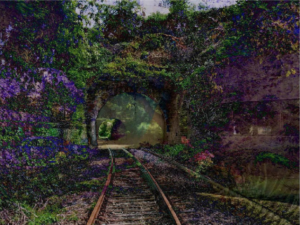Last week, a judge in Washington DC ruled that AI-created art is not copyrightable. Judge Beryl Howell of the District Court for the District of Columbia released her decision settling a dispute between Stephen Thaler, creator of the computer program Creativity Machine, and the US Copyright Office. The original issue was over a work Creativity Machine created called A Recent Entrance to Paradise. Thaler originally tried to copyright the work, putting the Creativity Machine as the original author but seeking to have the copyright transferred to him as the creator and owner of the program. Shira Perlmutter, director of the Copyright Office, explained that human authorship is one of the most fundamental qualities of a copyrightable work. Therefore, any image generated by the Creativity Machine cannot have its copyright transferred to Thaler because there can be no copyright at all. Thaler asked the office to reconsider several times, but they rejected his pleas. Thaler called the decision “arbitrary, capricious, an abuse of discretion and not in accordance with the law, unsupported by substantial evidence”.
According to Judge Howell, Thaler seemed to have gotten his priorities mixed up, dedicating a substantial amount of his briefings to the issue of whether a copyright can be transferred between a computer and a human. However, the more important point here was whether a computer can hold a copyright in the first place. Howell noted that, in doing so, Thaler “put the cart before the horse.” Howell conceded that copyright law is rather flexible, with the Copyright Law of 1976 stating that copyright can be applied to any original work of any medium “now known or later developed.” However, Howell sided with the Copyright Office, explaining that while subjects and media might change over time, human authorship is the one thing that, at least for the foreseeable future, cannot change. Of course, humans can use computer systems as tools in creating new works. Thaler frequently used the word “autonomously” about the Creativity Machine’s generation of the work, perhaps trying to convince people that its independence in creating the work would be enough to gain legal recognition. However, the fact that the Creativity Machine autonomously made this image did the opposite of what Thaler intended, emphasizing that there was no human involvement in the work’s creation. Howell wrote, “Copyright has never stretched so far, however, as to protect works generated by new forms of technology operating absent any guiding human hand […]. Human authorship is a bedrock requirement of copyright.” This is not the first time Thaler has gone to court for this issue. In a similar case, he was a party in a civil suit against the US Patent and Trademark Office that nearly made its way to the Supreme Court, but the justices refused to grant certiorari. In that case, which was settled this past April, the patent office declined to give him a patent for inventions developed by another one of his AI programs.
Howell’s decision, therefore, upholds the pre-existing rules. However, it is unknown how this decision will affect others. This includes a recent case involving a group of artists suing several technology companies who had developed AI programs, training them with art these human artists created. To the artists, this is a form of copyright infringement. However, if the AI-generated works are not copyrightable, that may make a very different story.

